Guitar skills: Learn blues and classic-rock lead guitar basics
Try these classic techniques and scales

Guitar skills: Start your journey to improving your solos with some essential blues basics...
Minor pentatonic scale
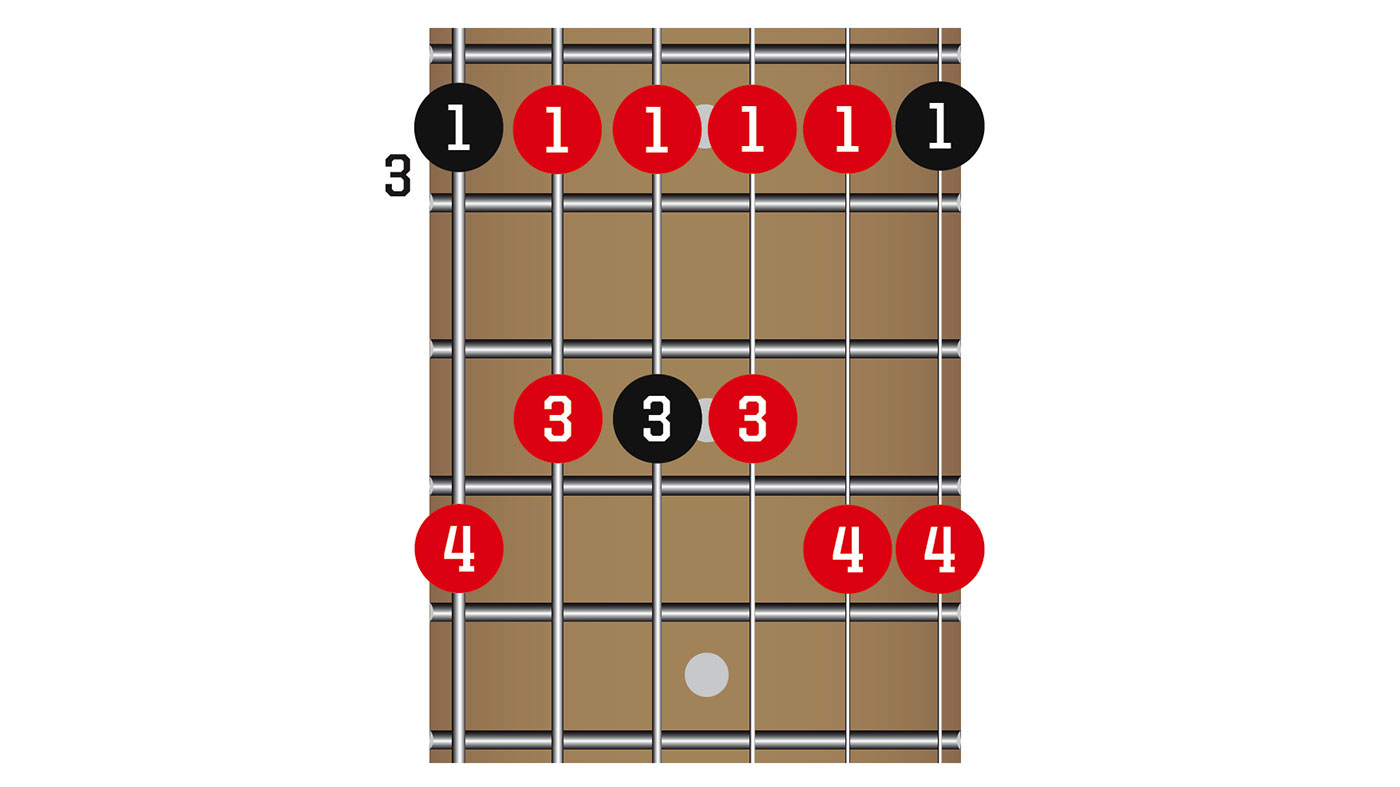
- Scale notes (in G): G BbC D F
- Intervals: 1 b3 4 5 b7
- When to use it: Play G minor pentatonic over a G5-C5-D5 powerchord progression for blues-rock with attitude
This is usually the first scale shape learned by aspiring lead guitarists. It’s also a core part of the styles of players such as Chuck Berry, Jimmy Page, Slash and many more. Start on a G note, as shown here, and you’ll be playing G minor pentatonic; start on A and it’s A minor pentatonic, and so on for other key signatures.
Mixolydian scale
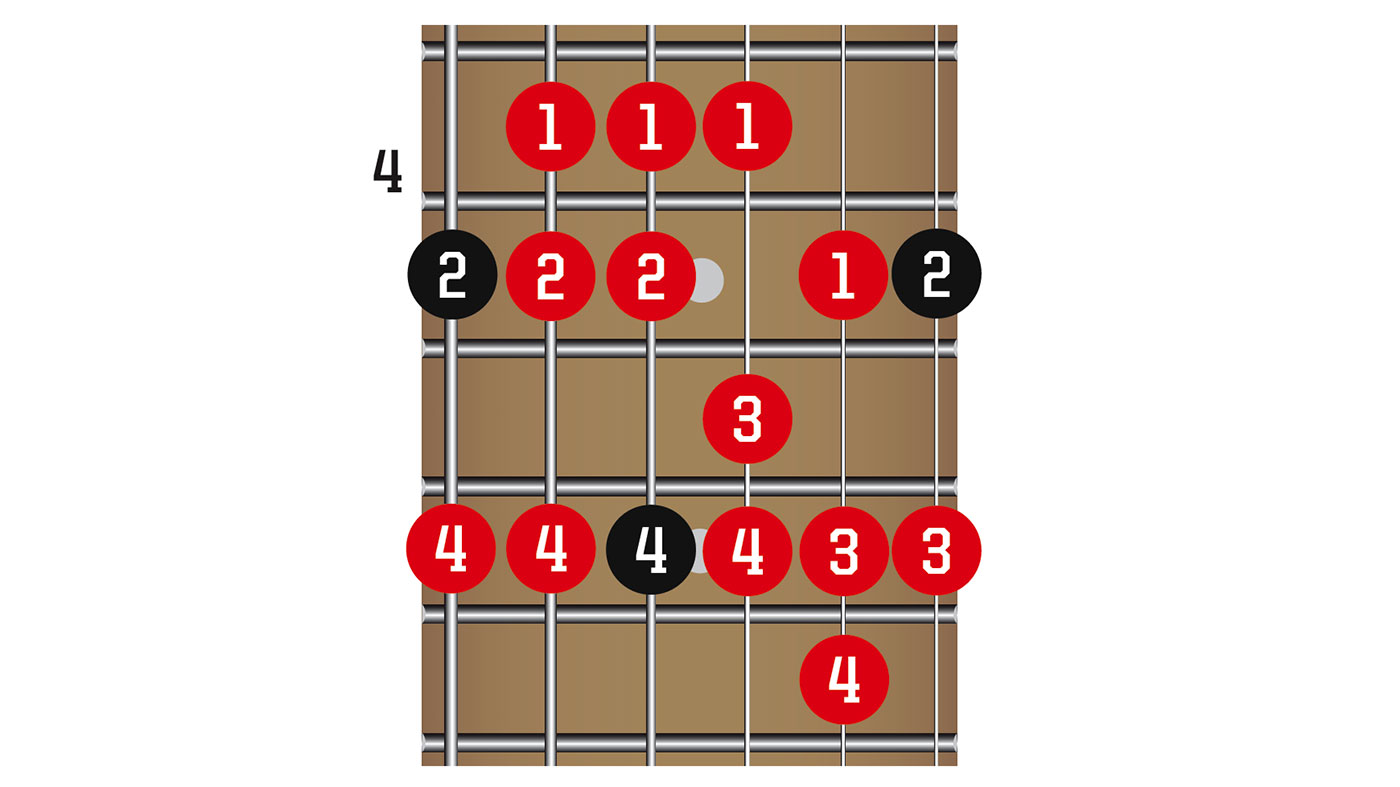
- Scale notes (in A): A B C# D E F# G
- Intervals: 1 2 3 4 5 6 b7
- When to use it: Try A Mixolydian over an A7-D7-E7 blues progression for a brighter sound than the minor pentatonic or blues scale.
Also known as a ‘mode’, the A Mixolydian scale is just like the A major scale (A B C# D E F# G#) but featuring a b7th. That means the seventh note is a semitone lower than in the major scale - so instead of G# you play G natural. It sounds less bright than the major scale - perfect for bluesy noodling over powerchords and ‘dominant’ chord progressions (A7, D7 etc).
1. Quarter-tone bend
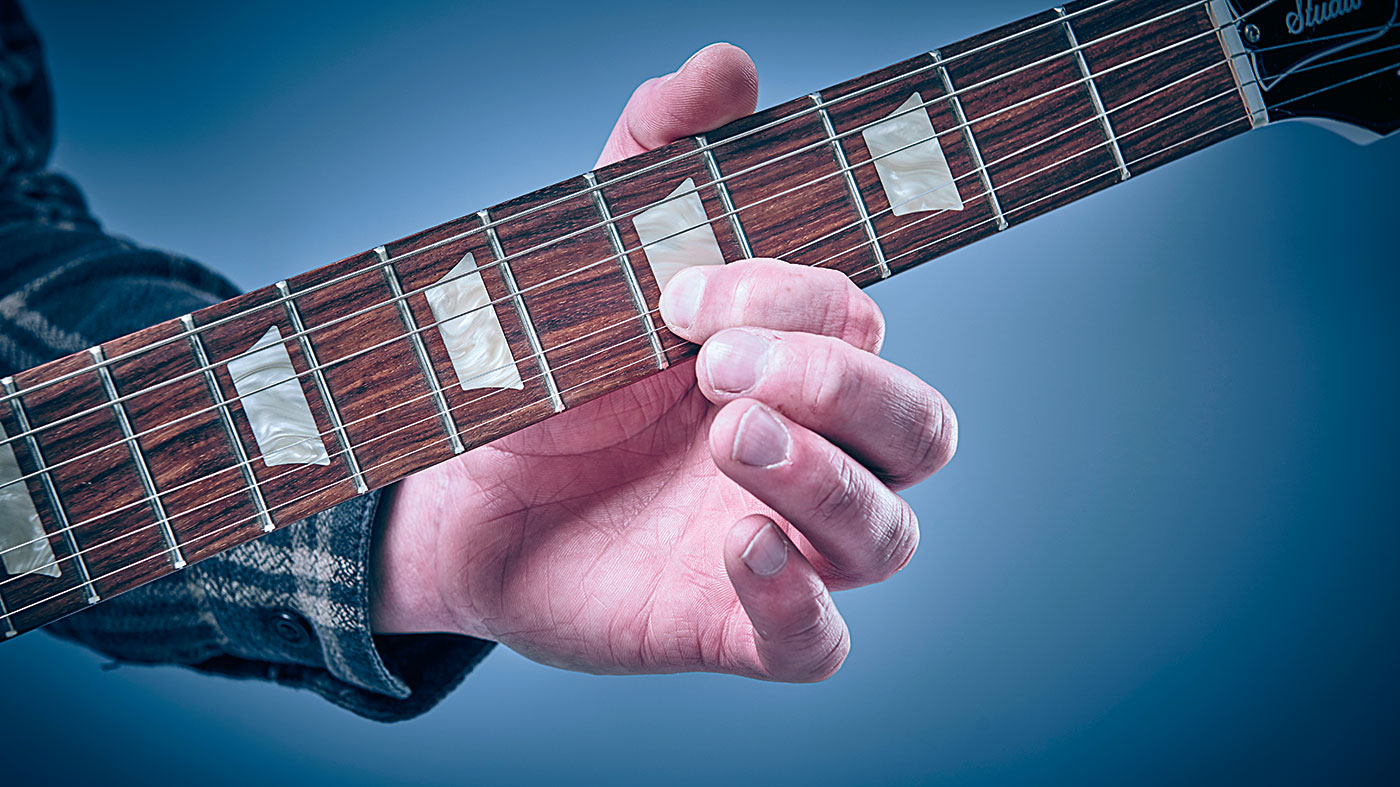
If there is a technique that will immediately give your lead playing some blues and rock authenticity, this is it! There simply isn’t a blues player out there who doesn’t use this device all the time. Often, it is the second note of the minor pentatonic scale (aka the minor 3rd) that is pulled or pushed slightly sharp, blurring the lines between major and minor moods.
2. Two-fret bend
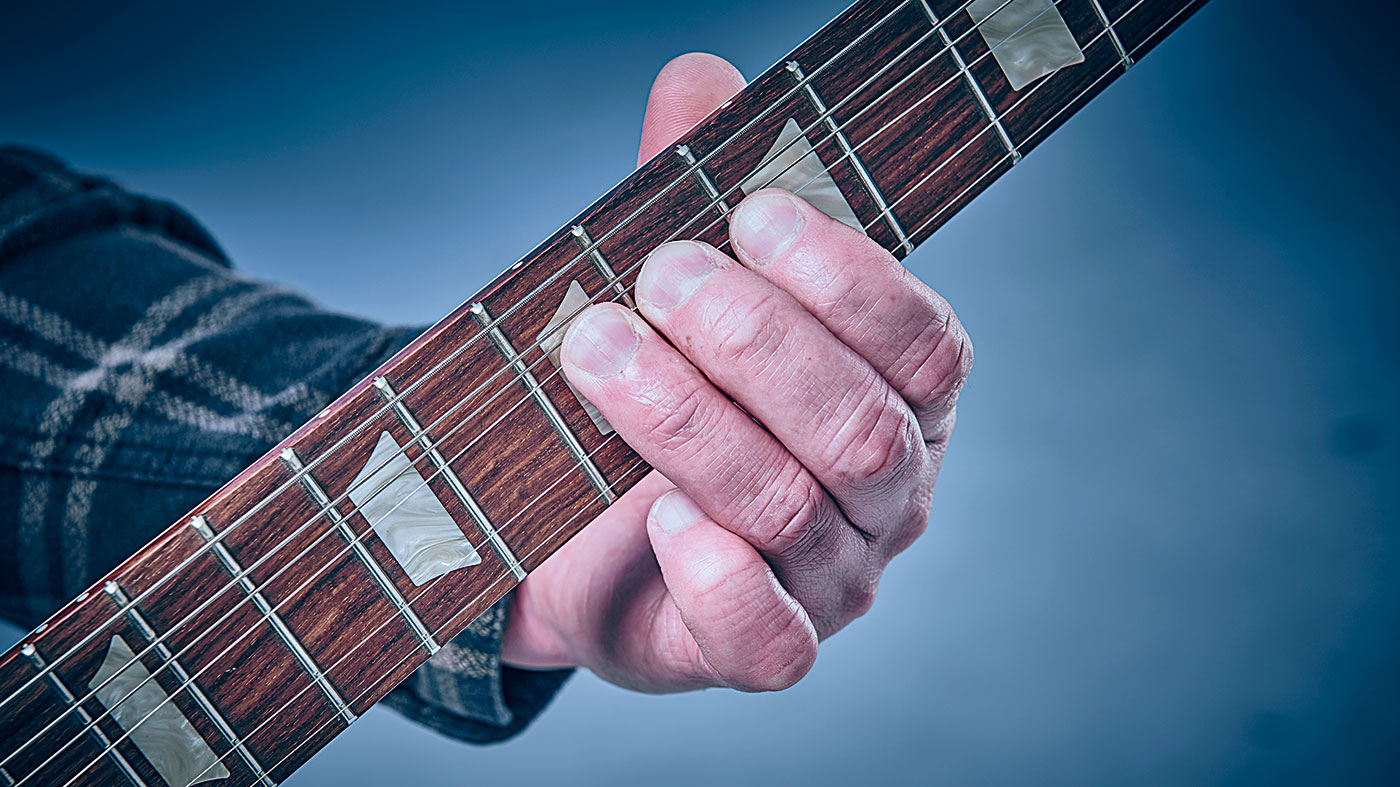
The two-fret bend is another almost universal technique that can take a while to master. As a general rule, most players push up on the three treble strings and pull down on the fourth, fifth and sixth strings, so you don’t end up pushing/pulling off the edge of the fretboard. Bracing two or three fingers together can really help with strength and accuracy.
3. Vibrato
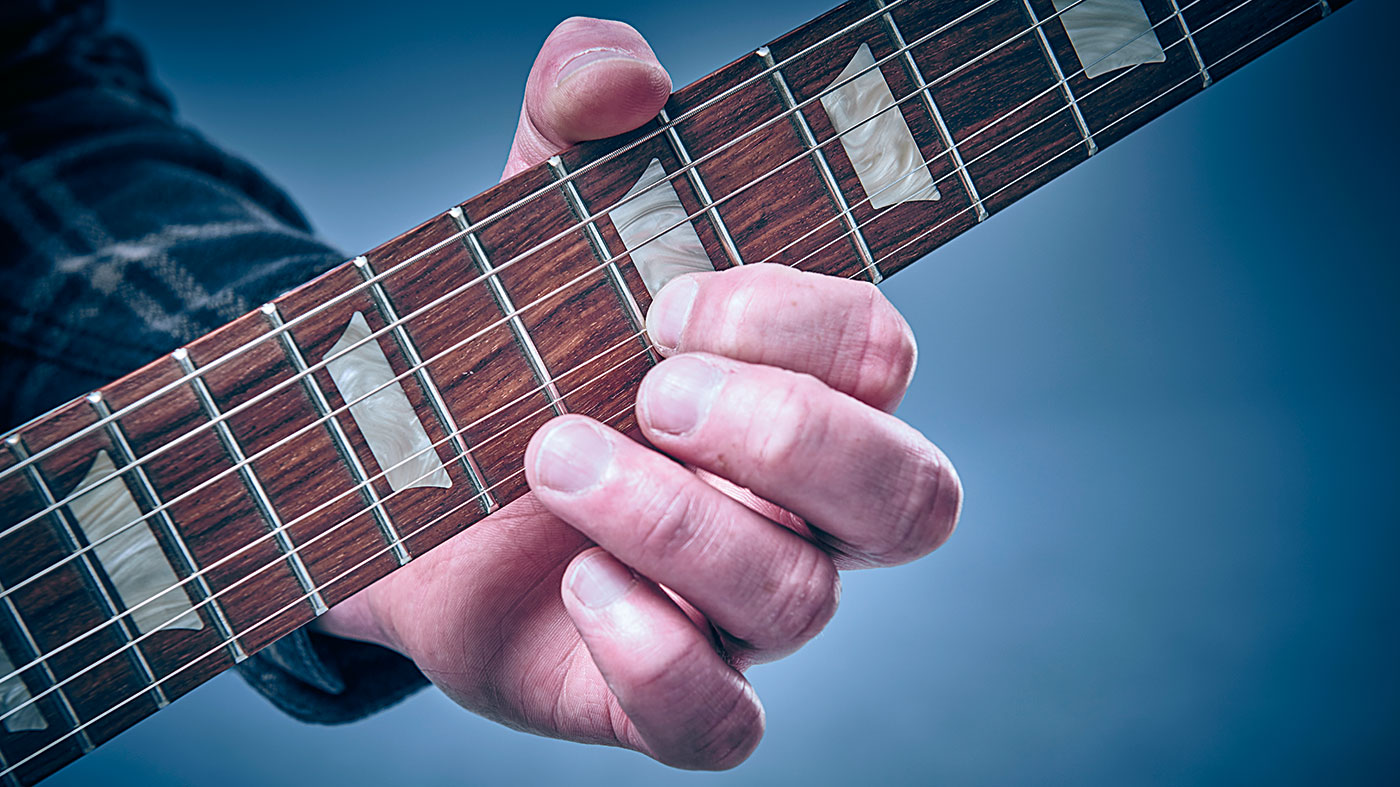
Another way of manipulating pitch, vibrato can be slow and shallow, fast and wide, or a combination of these. Stevie Ray Vaughan used a medium speed wide vibrato; Paul Kossoff and Angus Young combine speed and depth for a striking effect. Eric Clapton and BB King lift the thumb away from the back of the neck, allowing the fretting hand to rock to and fro.
Blues you can use

This Eric Clapton style line is derived from the G minor pentatonic scale, using quarter tone and whole tone bends with a thick overdriven tone. Notice how the lick can be repeated over the I and IV chords of a I-IV-V blues chord progression; that’s G-C-D in the key of G.
Get the MusicRadar Newsletter
Want all the hottest music and gear news, reviews, deals, features and more, direct to your inbox? Sign up here.
Mix of rock and blues

This Free and AC/DC inspired lick is played using the A Mixolydian scale (A B C# D E F# G). Try swapping the 6th fret C# note in bar 1 for a 5th fret C and you’ll be in the noticeably moodier A minor pentatonic scale (A C D E G). It’s a one-note change which you can easily exploit in your own blues jams.
Total Guitar is Europe's best-selling guitar magazine.
Every month we feature interviews with the biggest names and hottest new acts in guitar land, plus Guest Lessons from the stars.
Finally, our Rocked & Rated section is the place to go for reviews, round-ups and help setting up your guitars and gear.
Subscribe: http://bit.ly/totalguitar










